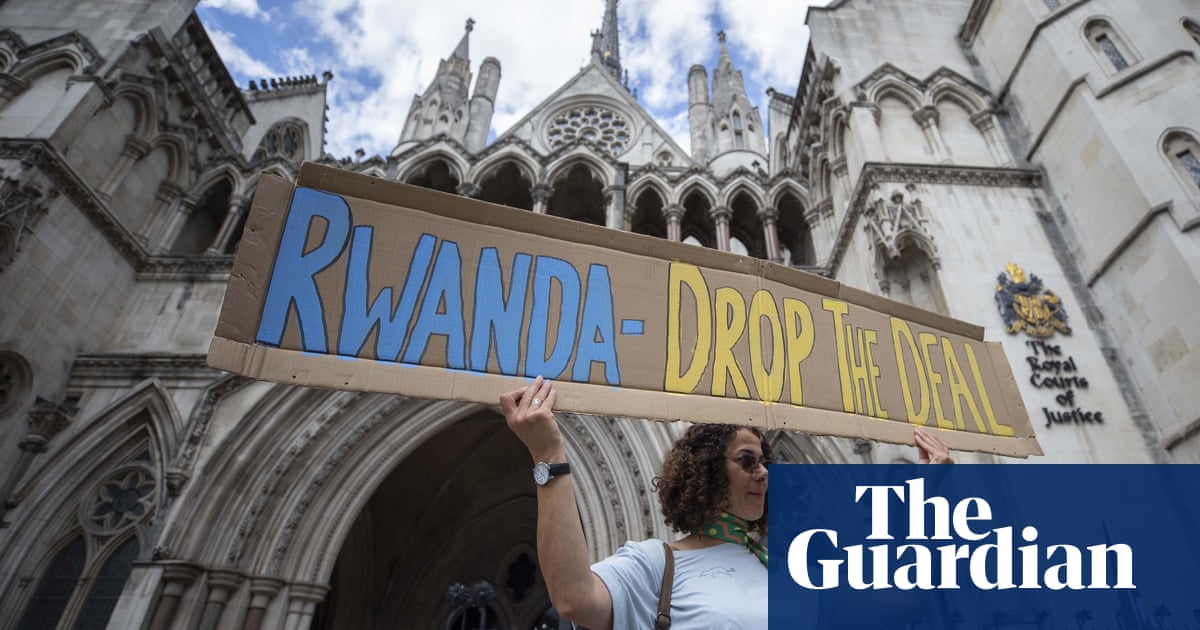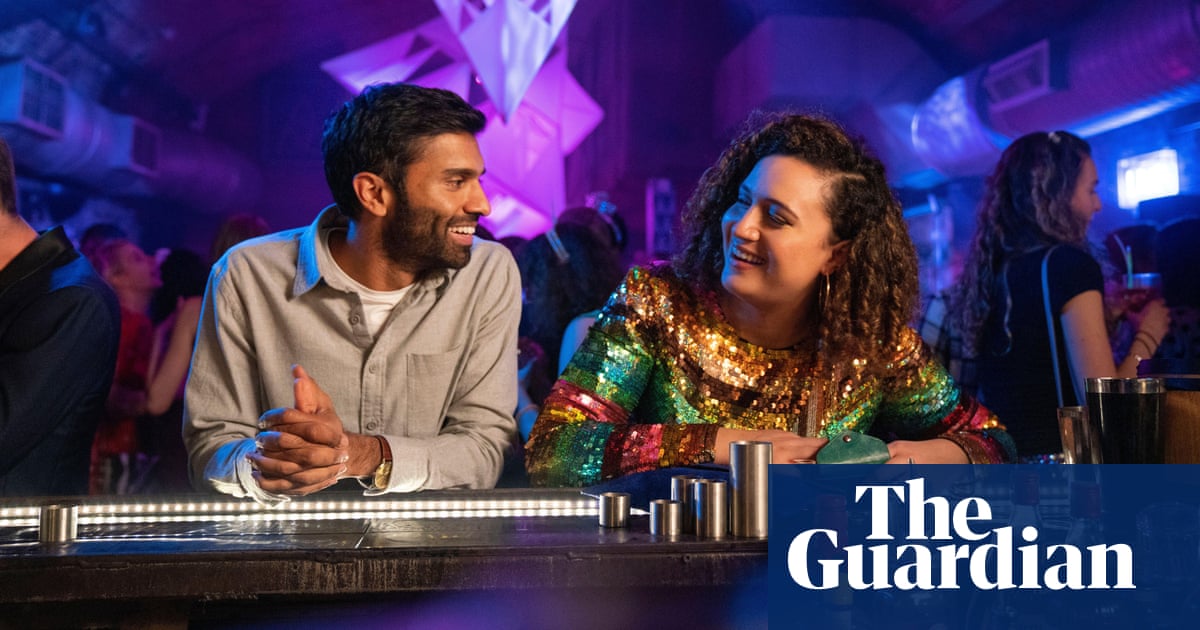
“A few years ago I was sent something: ‘Here’s the premise, a woman’s body found naked wrapped in clingfilm, where do you go next?’”
That one example from an anonymous screenwriter perfectly captures crime drama’s obsession with violence against women. Sometimes we talk about that a lot, other times it just washes over us. It’s easy to get broad agreement that violence against women in real life is bad, but it’s harder to say for certain that the prevalence of that violence on screen feeds into it, and it is more or less impossible to maintain it as a social priority. It drops out of fashion, and takes some new non-fiction horror such as a real-life, high profile, killing of a woman walking home to revivify the interest, then we go back over the same terrain again, like goldfish.
Line of Duty returns this weekend for its hotly anticipated sixth season – and while any attempt to remember the plot will make your head hurt, the tropes are all too easily recollected. Police corruption conspiracy; the manipulative bitch; the paedophile ring; the manipulative bitch who gets a taste of her own medicine when her throat is cut; the one straight copper in a nefarious world. It’s actually – no offence – so full of plot cliches that you wouldn’t pick any particular one out of a lineup. Yet, it’s interesting to see that mashup of film noir sensibility – in which the conniving woman is believed for too long, with deadly consequences – with the more recent crime drama norm, that whenever a storyline is missing a certain je ne sais quoi, a woman is killed, preferably a teenager.
Raymond Chandler’s old adage, “When in doubt, have a man come through the door with a gun in his hand” has been updated: if you’re worried that nobody’s really feeling it, kill a woman.
This runs contrary to the recent unstoppable rise of true crime, and true crime-inflected drama. Unleashed by the world of the podcast, notably Sarah Koenig’s seminal Serial in 2014, there is apparently no limit to the world’s appetite for crimes that actually happened. And when you see a pile-up of true crime, you notice how few of them conform to these dramatic notions of which bad things happen to which people. Last year, we had The Salisbury Poisonings (state-sponsored murder); White House Farm (the Jeremy Bamber killings), as well as Des, about Dennis Nilsen, who murdered men; When They See Us, about a wrongful conviction of five teenage boys; The Assassination of Gianni Versace; and Quiz, about the Who Wants to be a Millionaire? cheating scandal.
There are, of course, also examples with female victims, but real life in no way conforms to the model of female vulnerability and victimhood that transfixes so much mainstream drama. Fiction is actually stranger than fact, if only in the sense that fiction’s obsessions are so visible – and so visibly at odds with the world it seeks to describe in which more men are actually murdered than women.
Sophie Petzal, the 30-year-old screenwriting wunderkind known for Channel 5’s Blood, has just been announced as the head writer on Netflix’s The Seven Deaths of Evelyn Hardcastle. “It’s a book that exists, and you can read it and know that it’s not quite what it seems,” she says, “but in the marketing of it, the title of it, it’s another dead lady as entertainment. This is a debate I’m constantly having with myself.”
Haven’t we all: it’s five years since Smack the Pony star Doon Mackichan made the radio documentary Body Count Rising, “because I was getting really quite angry about what I was watching, porn bleeding into entertainment, women being pulled by their hair down the stairs, followed, raped”. And it’s three years since Germaine Greer caused a spat when she wrote in the Radio Times that women were driving the appetite for dead female bodies because that was what we were all into. (At that time, the spike was still coming from Scandi noir, memories of The Killing and a new season of The Bridge.)
The issue is ongoing and more complicated than determining what a responsibly selected victim looks like. As Petzal says: “You don’t want to say, ‘You can now only kill men.’ People like murder shows and, for those, people have to get murdered.” Rather, there’s a specific set of prototypes and cliches that diminish women in concrete ways. Petzal describes the first: “The woman is found naked and staked into the ground like a piece of art – wow, sexy dead lady – and, ‘Aren’t men monsters?’, says man.”
True Detective was a pioneer in the fetishisation of the corpse, although the show that stood out for me was the Mads Mikkelsen series Hannibal, based on the Thomas Harris books which spawned The Silence of the Lambs. It was cancelled in 2015 but has had such traffic recently on Netflix that there are talks to renew it for a fourth season. It was stylishly written and unbelievably disgusting, and I finished every episode feeling really sour. The issue is straightforward: you shouldn’t dress up a mutilated woman to be titillating or in any way aesthetic, any more than you should sit on a dead horse or take selfies around a corpse. Or, if you want to do that, you should ask yourself why, and the rest of us shouldn’t have to watch.
Allied to that is the “hot rapist” trope. “The Fall was a massive hit,” said a head of development who also wished to remain anonymous. “Loads of women I know were saying, ‘But it’s so feminist, Gillian Anderson’s the detective,’ and that just wasn’t true.”
It’s noticeable that murders and abductions of children, while they provide a similar immediate hook into the audience’s emotions, never have “injury detail”, as the Netflix content warning puts it. “You’d rarely even see the child on screen,” Petzal says – we’d recoil in horror, and stop watching. Yet we have no such qualms about women. There is an intersection with race, here: violence against a woman of colour will be depicted in a particularly brutal way. The screenwriter recalls one hugely popular recent example: “The Undoing had a very gratuitous murder of a woman of colour.”
So how to solve the problem? Most agree that such really tasteless dramas happen when there aren’t enough women in the writing, directing and production process. The head of development says: “There was a series of books where one of the crimes, the guy had cut open a pregnant woman and replaced the baby with baby rabbits. And I just said, ‘There’s no way I want to develop that.’ And that had already been commissioned by a German production house, so it was halfway to getting a green light.”
However, the anonymous screenwriter believes that things are improved post-Weinstein: “Everyone in the industry immediately changed their tune. Things you’d been saying for years in writers’ meetings, ‘Shall we not have this rape?’, it was as though suddenly people could hear you. We had a quote wall in a writers’ meeting. Every writer would come along with ideas, someone always suggested a character get raped. I said, ‘The thing is, that character’s already been raped.’ There was this big silence, and my boss said, “When was she last raped?” Sexual violence, violence against women, was the go-to for creating any drama. And it went on the quote wall: ‘When was she last raped?’”
Petzal has another rule, which is “not using the death of a woman to motivate a sad man”. “It’s what gets my goat the most,” she says. “Bruce Willis’s wife dies and now he goes on journey. You see a lot of that in Sunday crime.” Allied to that, she won’t go with any storyline where the female character could be replaced by a “sexy lamp”, where the “girlfriend is literally just there to be kidnapped”, a decorative item for the hero to chase or protect. “I remember complaining about that, and I was told, ‘Sophie, 10-year-old boys watch this show, and that’s what they want.’ A whole other battle is getting men to accept that [this] is the realm of young women and not young men. Just look at the fanfic. All that horny stuff is not written by 10-year-old boys.”
It’s simple, really: if we want to torch the cliche of “a woman walking alone and the camera over her shoulder”, we don’t need to make rules about the maximum number of women who ought to be murdered in any given season, or how their murders should be represented. We just need more women involved in the creation of drama. As Petzal says: “We tell stories, we’ve told stories for eternity. Women need rescuing, women are fragile, easy prey, likely suspects, natural victims We are basically like antelopes on the savannah – it’s horrible when we get eaten alive but it’s also nature. I want to say: no, this is not natural.”












